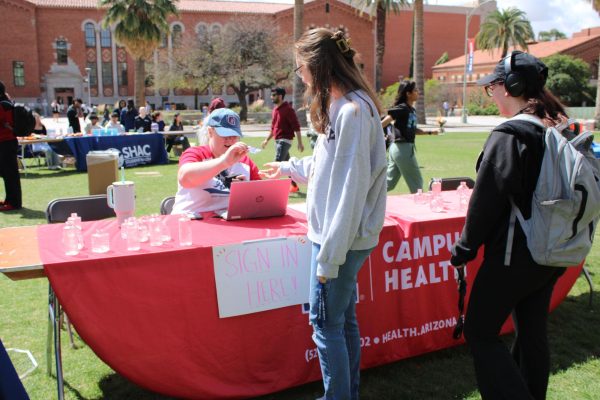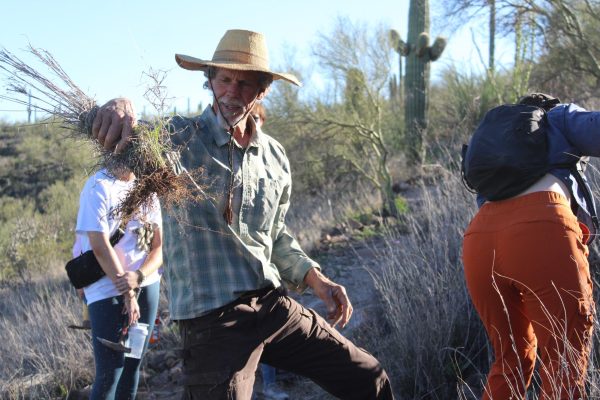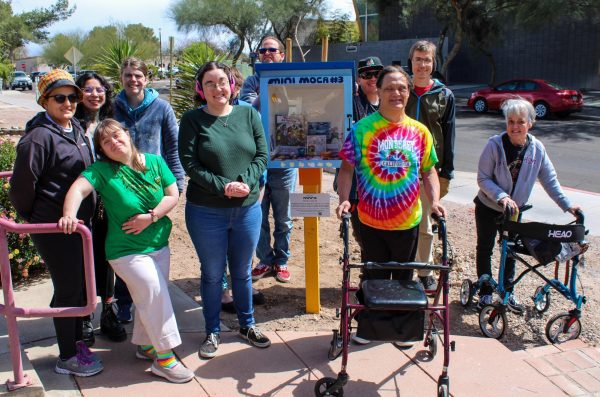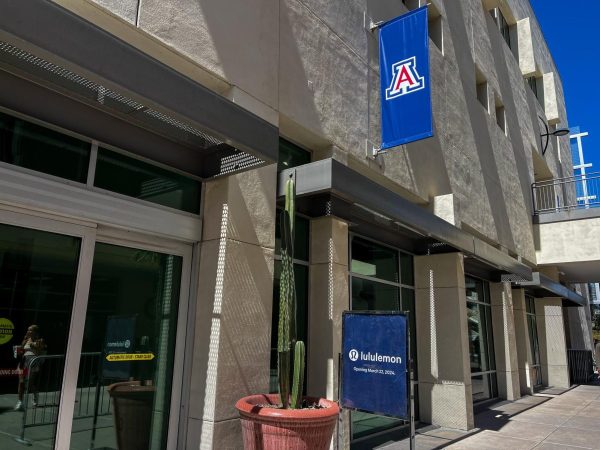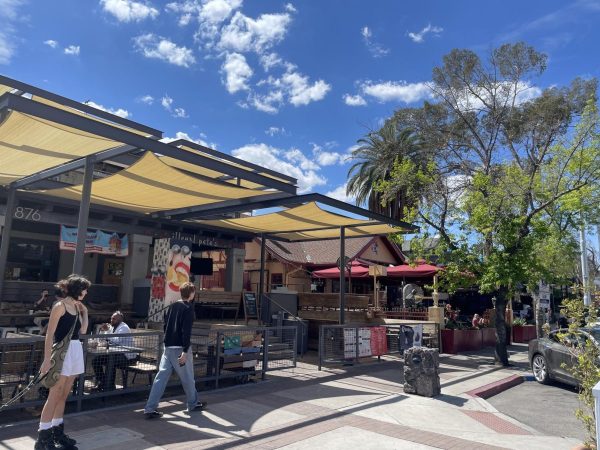Shelton pushes stimulus package

President Robert Shelton
April 16, 2008
PHOENIX – An economic stimulus plan proposed by the state’s three university presidents is gaining steam as Southern Arizona business organizations profess support, but some believe the plan is far-fetched given the state’s budget deficit of more than $1 billion.
The Stimulus Plan for Economic and Educational Development would allow the three universities to sell more than $1.4 billion in bonds for new buildings for science and technology, and also to make repairs to existing buildings at the UA, Northern Arizona University and Arizona State University.
At the UA, the bonds would be used to build a new environmental and natural science building, as well as expansions to the headquarters for the College of Social and Behavioral Sciences and an upgrade of Centennial Hall, said UA President Robert Shelton.
The bonds will also be used for maintenance on buildings in need of repair, he said.
“”It would make a huge difference in the quality of life on campus,”” he said.
The universities would “”eat”” the start-up costs of the plan and absorb 20 percent of the cost, said UA lobbyist Greg Fahey.
Starting in 2010, the state would pay about $82 million over 25 years to pay for the buildings, and construction could start as early as next year, he said.
So far, more than two dozen individuals and business organizations have lent their support to the proposal, which is meant to jumpstart Arizona’s faltering construction industry and also accommodate the growth of the state’s higher education system.
A Bold Experiment
Under a proposal meant to stimulate Arizona’s economy, the state’s three universities would sell more than $1.4 billion in bonds for new science and technology buildings, and also make repairs to existing buildings.
What the UA would get:
? $130.7 million in deferred maintenance, which includes infrastructure repairs, updates and renovations to university buildings for the 2009-2011 fiscal years.
? $90 million for an environmental and natural science building*
? $44 million for a social and behavioral sciences building
? $70 million for an engineering research building
? $12 million for Centennial Hall renovations
* The UA will also put up $20 million of its own money for this building, aside from covering 20 percent of the total cost of the plan.
Sources: Proposal documents; Ziemba Wade Public Relations
The plan would allow Arizona to diversify its economy and address a state need, said Laura Shaw, a spokesperson for Tucson Regional Economic Opportunities, an economic development agency.
“”A major part of our economy is the construction industry, and this package will help jump-start it again,”” she said.
From December 2006 to December 2007, the number of housing permits in Tucson decreased by 41 percent, according to numbers from the Eller College of Management’s Economic and Business Research Center.
The drop in homes built affects not only the contractors, but everyone they do business with, including construction workers and companies that produce building materials, said Alberta Charney, a senior research economist with the research center.
Currently, the state awards about 18,000 bachelor’s degrees per year, Shaw said, adding that the proposal could increase that number by helping produce more science and engineering graduates.
“”In order to be competitive and in order to fill the current job market, we need to produce more degrees than that,”” she said. “”We felt like this really helped to increase the capacity of the universities in order to graduate more students, in particular, science and engineering degrees.””
Opponents to the proposal include Sen. Bob Burns, R-Peoria, who said universities and cities should be taking money needed for building projects from the revenue that is gained from revenue sharing, rather than attempting to solicit the state for money.
“”We don’t have the money,”” he said. “”We have authorized spending in excess of available revenue by one-and-a-half billion dollars.””
The state’s general fund money is expected to run out within weeks, and the state is in no position to sign on to such a proposal, he said.
Shaw pointed out that the plan has no fiscal impact on the state until at least 2010.
“”In some ways, what better time would there be to take advantage of low interest rates?”” she said.
Shelton agreed.
“”If you look at all the conditions, I think it’s the ideal time to do this,”” he said. “”It’s going to generate more income for the state than it will cost the state to pay back.””
The Arizona Board of Regents will discuss the plan at its next meeting April 24-25 on the UA campus.






